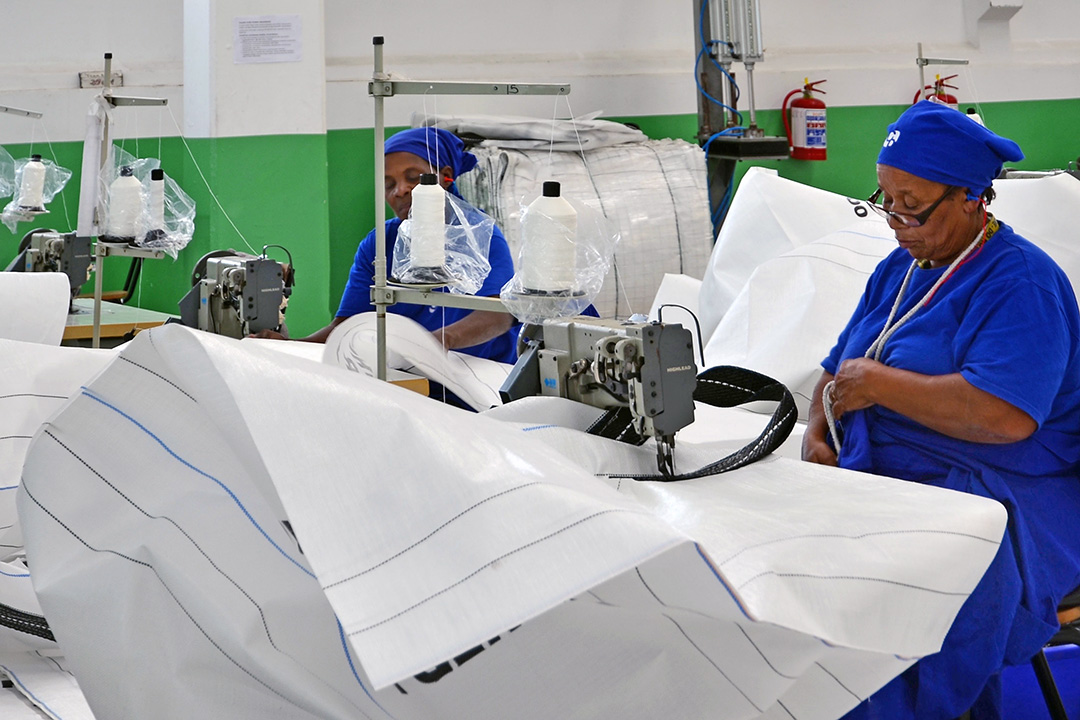Bulk bags, also called flexible intermediate bulk containers (FIBCs), are highly customisable packaging solutions for large quantities of various materials. They are incredibly durable, strong and sustainable – making them a highly cost-effective solution for storing and transporting bulk materials.
You can, essentially, design your own bulk bag to meet your specific functionality and safety requirements. As a leading manufacturer and supplier of FIBCs in South Africa, Custom Bulk Bags will guide you through the design and ordering processes to ensure that we deliver packaging products that are right for your business.
We produce up to 3.5 million bulk bags per year for various customers. All of our FIBCs have a minimum safety factor rating of 5:1 and are manufactured in accordance with international regulations and standards, as well as UN-certified designs. As these products can be so variable, it’s important for you to understand each component of a FIBC’s design.
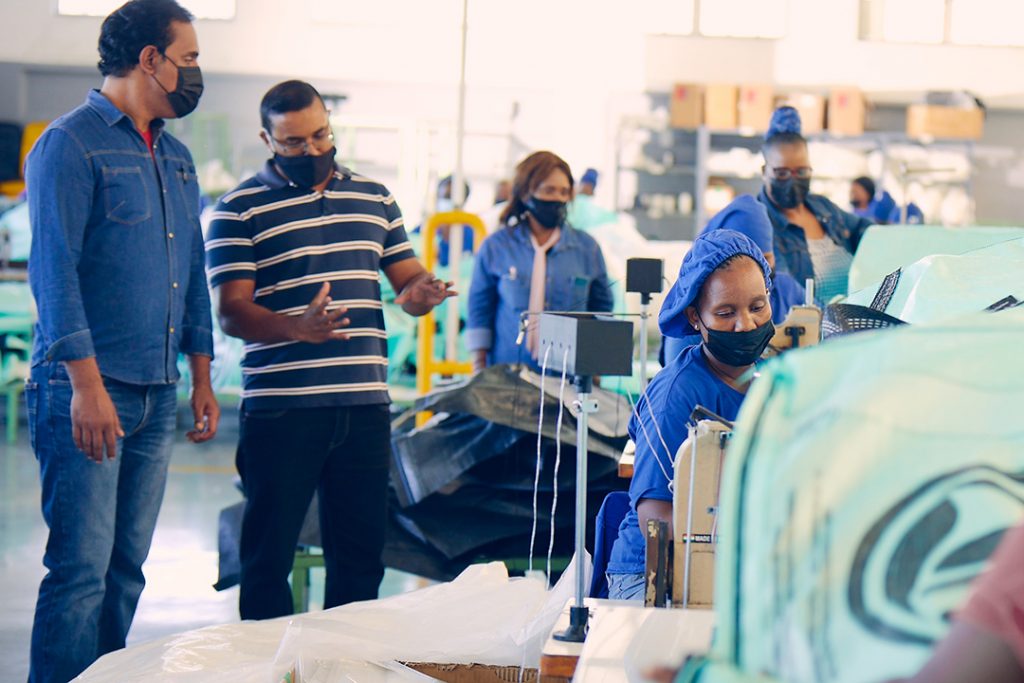
Design starts with size and specifications
The first thing you need to work out is the size and specific features that you require. Bulk bag sizes are written as base dimension 1 x base dimension 2, so a 50 x 50 bulk bag has a base area of 2500cm2. The heights of the bag can vary depending on your lifting equipment, the size of the lifting loops and the desired volume of the bags.
There are also three basic types of FIBC construction: U-Panel, circular and baffled. Our expert consultants will be able to recommend the best design for your company and facilities. The next choice to be made is the weight of the fabric, also known as gauge thickness.
The fabric weight is usually determined by your specific requirements and the desired Safe Working Load or safety factor rating. These weights range from 130gsm (lightweight) to 240gsm (heavyweight). In general, the heavier the weight, the more load the bag will be able to hold, but this also increases the price.
Lastly, you will need to choose a fabric type and colour. Each fabric type has specific properties, such as anti-static protection. The colour of the fabric will depend on your branding requirements and the colour of the polypropylene pellets used to extrude the fabric ribbons. White is the most common colour for FIBCs, but they can be manufactured with black, green or brown fabric too.
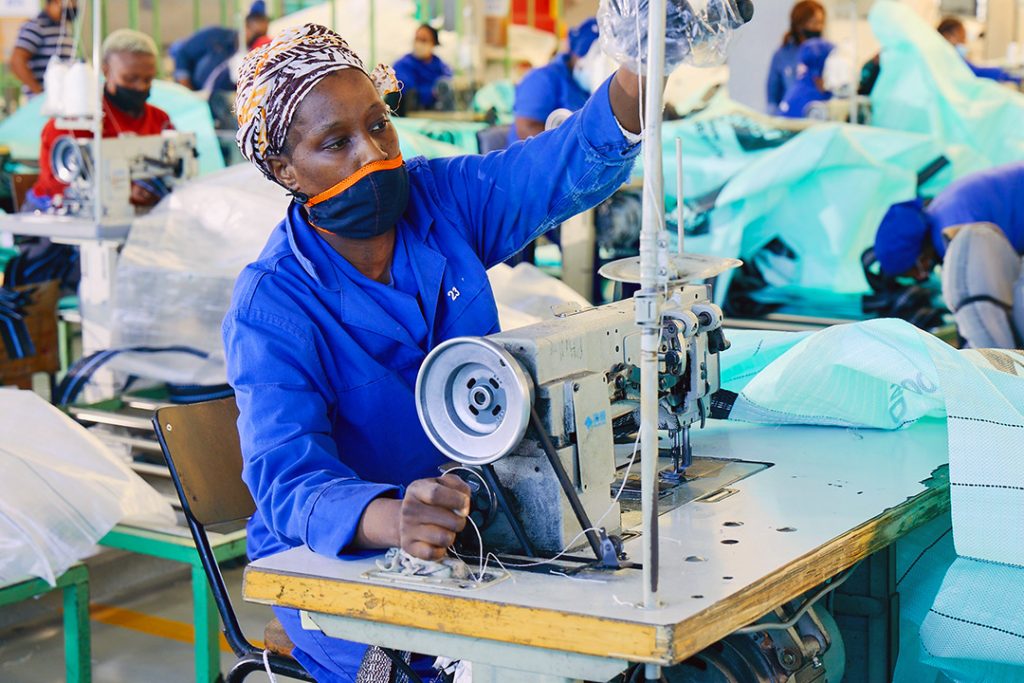
Top and bottom closures
One of the most important aspects of a FIBC design is the closure requirements. These are the top and bottom panels of the bags and are designed to match your filling or unloading equipment, as well as the methods used when handling the bulk bags. The most basic construction is a fully-sealed bottom and an open top.
Other top styles include flap, spout or duffle; a flap top is just an extra panel of fabric that can open and close (often with the use of a zip). A spout top is designed to attach to a filling spout, which prevents spillage. A duffle top is like a skirt with a drawstring that can be opened and closed, which also prevents spillage during transport.
The bottom closures are probably more important considerations as they are load-bearing and can impact the safety of the bag design. Bottom styles include flat (fully-sealed), full-bottom discharge or spot discharge. Again, the dimensions of the discharge spout can be customised to fit your equipment.
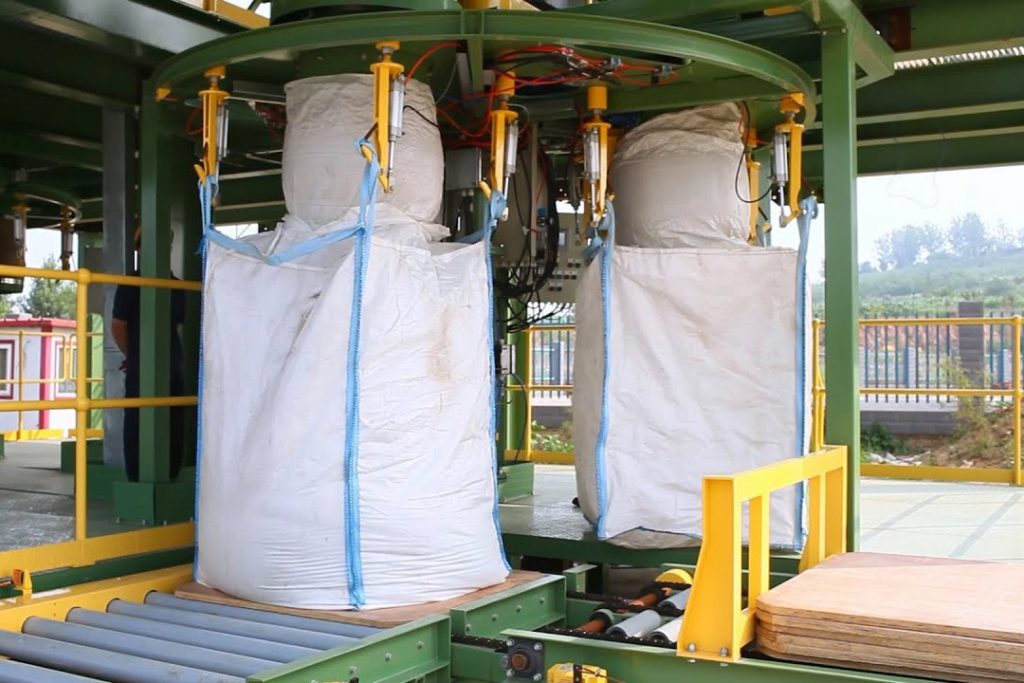
Fabric coatings and liners
The next design feature to consider is whether or not you’ll need additional coatings on the fabric. A coating is usually a thin layer of polypropylene that is applied to the fabric to increase its moisture protection and sift resistance. Another common coating is UV protection, which prolongs the shelf life of the FIBC in outdoor environments.
Additional inner liners can also be ordered. There are various types of liners that perform specific functions – the most common of which is for additional protection against moisture and sifting. Foil liners can be added for robust support and protection against light and heat. Liners can either be fitted loosely inside the FIBCs or permanently attached to the inside.
Lifting loops and seams
The lifting loops (or straps) and seams of bulk bags can be customised. For the lifting loops, the length and thickness can be varied depending on the lifting equipment used at your facility (forklifts or cranes) and the weight of the fully loaded bags. These loops can be attached in various ways to achieve certain performance characteristics.
Next, the seams play a role in the strength of the panels and the sift properties of the FIBC. Standard seams will support most product particle sizes, but for ultrafine powders or viscous liquids, sift-proof seams will be needed. These are also called dust-proof seams and they help to prevent any fine particles from slipping between the cord or panels of the FIBC.
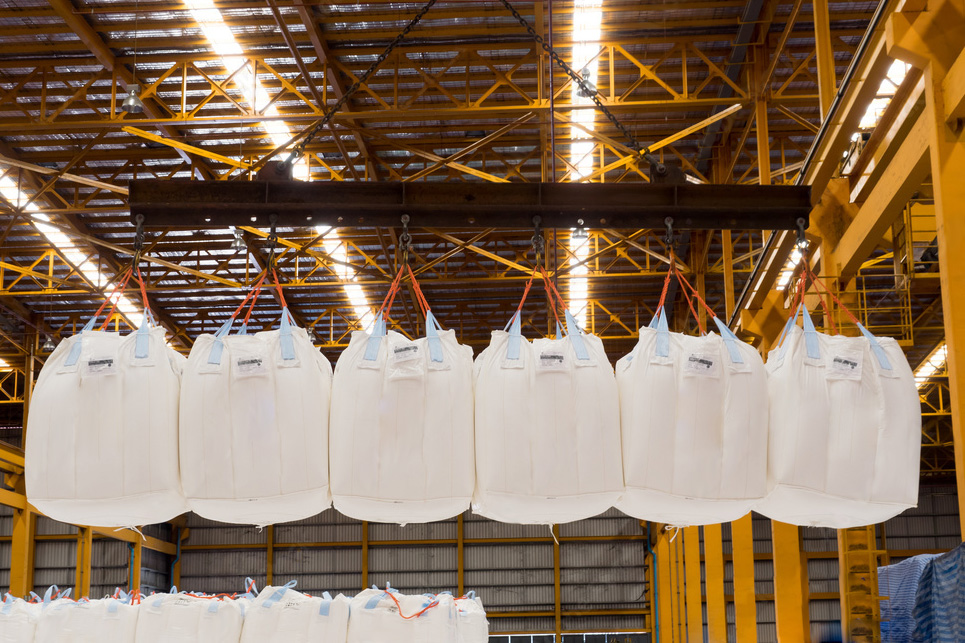
Safe Working Load and safety factor
These specs are vital for the safety of your employees and anyone that handles loaded bulk bags. The Safe Working Load is the amount of weight (in kilograms) that the bag is designed to carry. Custom Bulk Bags can hold between 500kg and 2000 kg.
The safety factor, on the other hand, is the actual maximum weight that the bags can carry. This is expressed as a ratio, such as 5:1, which means that the bag can hold five times its intended Safe Working Load without breaking. Never exceed the Safe Working Load, even if the safety factor determines that the bag is capable of holding more.
Printing and final additions
The last steps of designing your own bulk bag include the printed designs and information on the external panels, as well as any final additions needed. Custom Bulk Bags can print logos, product information, barcodes and other details on the fabric of the bulk bags. We can print up to four colours on each panel.
Other additions, such as document pouches, can also be included in the design during this final stage. By working with one of our consultants, you’ll be able to specify your exact requirements and determine what may or may not be necessary for your FIBCs. For more information about our bulk bags, please contact us today.
___
Custom Bulk Bags is a leading South African manufacturer of woven polypropylene bags for various industries, such as mining, chemicals and food. We are able to produce over 3.5-million bulk bags per year, keeping our customers in stock at all times. Our bags adhere to the highest levels of quality as a result of our stringent in-house testing and quality control programmes.
Custom Bulk Bags holds ISO 9001 certification and we currently have a number of UN-certified designs. We are a Level 2 B-BBEE manufacturer and supplier and fall under the ownership structure of Deneb Investments Limited. For more information on our products, contact sales@custombulkbags.co.za. Follow us on Facebook for our latest news and industry insights.
